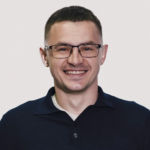We use cookies to ensure we give you the best experience on our website. By clicking Agree you accept our Privacy and Cookies Policy.
What is software as a medical device and why it matters for the healthcare industry

 7 minutes read
7 minutes read
Content
Technology breakthroughs that emerged over the past 20 years altered our ways of working in nearly every industry, and healthcare is no exception. IoT, big data, artificial intelligence, cloud computing, and other innovations transformed business processes to the point where it became impossible to conduct medical practice without relying on software. In turn, healthcare software itself has been shaped by leading-edge technologies and evolved from a medical equipment accessory into standalone software that performs functions of a device.
In this article, we’ve put together all the information you need to grasp the idea of software-based devices. To make things more concrete, we will illustrate each category with real-world examples. And more importantly, we will help you find out whether your healthcare software is qualified as a medical device.
What is software as a medical device(SaMD)?
Software as a Medical Device (SaMD) is a specific category of software that is considered a medical device on its own. It’s defined as software that has a medical purpose but is not required for the primary function of a hardware medical device.
According to the FDA, software as a medical device performs one or more medical functions without the need for medical equipment. Bottom line: SaMD is able to perform medical functions by design and doesn’t require any other software or hardware to implement an intended functionality. In a nutshell, SaMD is a medical device on its own. However, it can integrate with medical equipment and general-purpose software, take input from IoT devices, and embed different types of software to collect data and produce practical recommendations.
How to distinguish SaMD from non-SaMD? The thorough classification of software as a medical device and its clinical evaluation defined by the FDA is a subject for another exhaustive long read. So instead of digging into the details of SaMD classification, we will try to understand how to apply it in real life by examining the use cases.
| SaMD | Not SaMD |
| Determines medication dosages based on patients’ data | Sends notifications and pill reminders |
| Identifies and diagnoses breast cancer by post-processing MRI images | Runs an MRI machine |
| Tracks mole sizes over time and determines the prospect of melanoma | Takes pictures of moles on the human body and stores them in a gallery |
| Analyzes data from medical devices to determine risk factors associated with a stroke | Operates a cardiac pacemaker |
| Collects data from a blood glucose meter to advise on insulin dosage | Mobile application that controls a specific blood glucose meter |
| Develops treatment plan based on health records and other data input | Electronic health record (EHR) systems |
Once you determine which component performs a medical function, you can easily distinguish SaMD from SiMD and other types of healthcare software. If your mobile health software fails to meet the criteria provided above, it falls outside the scope of software as medical device regulation.


Looking to stay ahead in the evolving healthcare industry?
Partner with Blackthorn Vision’s experts to build cutting-edge medical software that improves patient outcomes and drives your business forward.
4 types of medical software
The World Health Organization sums up over 2 million kinds of medical devices worldwide, all of them categorized in 700 generic groups. The universe of medical devices is far larger than the Marvel universe: from the most simple instruments like stethoscopes to million-dollar-worth MRI machines with hundreds of settings operated by advanced in-built systems. Therefore, any instrument, machine, appliance, implant, petri dish reagent, or software specifically intended for a medical activity is regarded as a medical device.
Medical software falls into 4 main categories:
1. Software as a medical device (SaMD) – a standalone software that works as an autonomous system that represents a medical product of itself. For instance, Computer Aid Detection software analyzes MRI images in order to recognize patterns of common diseases.
2. Software in a medical device (SiMD) – an operating part of medical equipment. For instance, SiMD software operates MRI machines and other hardware used in hospitals.
3. Software that serves as Medical Device Accessory (MDA) to support and augment its performance. MDA software examples include software for remote control of medical equipment.
4. General-purpose software that is not a medical product by itself. This category grasps software that can simply manage data and optimize business processes. Mobile health apps perfectly fit this category, namely EMR and EHR systems, telemedicine apps, prescription management apps, well-being apps, and other apps for doctors and patients.
Software as a medical device brings novel opportunities for healthcare providers, but it also brings new challenges for federal administrations. The development of guidelines that regulate medical device software ensures its clinical effectiveness and safety, as well as the protection of sensitive information.
Why is it important to categorize medical device software? Since each category is subject to specific regulations, healthcare software providers must classify their products before following the regulations. Therefore, hospital software vendors need to know how these guidelines apply to their products and which certification is necessary to land their freshly built software on the market. For more detailed information on SaMD regulation, check this article.
The features and intended use of SaMD
Although software as a medical device won’t replace doctors in the near future, it has become an increasingly valuable tool for effective patient care. SaMD excels at collecting and analyzing data in a blink of an eye, augmenting the potency of medical equipment. As a result, SaMD automates the delivery of healthcare services and accelerates diagnostics, control, and treatment of numerous medical conditions.
What is SaMD used for?
Software as a medical device can be utilized in a variety of cases:
- Critical situations or conditions where accurate diagnosis or treatment action is vital for patients’ life and health.
- Serious situations or conditions where precise diagnosis or therapy is necessary to avoid unnecessary medical procedures.
- General situations or conditions where inaccurate diagnosis or treatment is important but not critical for interventions.
SaMD brings unparalleled benefits for both doctors and patients. Here are the most common features of SaMD:
- Screening and diagnosis of health conditions
- Medical treatment
- Support and assistance in using medical products and devices
- Diagnostic support
- Providing relevant clinical data
- Improving the clinical decision-making process
As you can see, SaMD can be used in nearly any clinical situation. Armed with the latest technology, it helps deliver precise and error-free medical help in a timely manner. And as we all know, timely medical care is just as important as proper medical care.

Our expertise in healthcare software development
Digital disruption affects all areas of business and social life. Data-driven innovation doesn’t just automate mundane tasks; it changes the way we think about healthcare. Today, medical technology that delivers the most tangible benefits is not hardware or devices but rather assistive software that accumulates and analyzes clinical data. That’s why the software as a medical device niche evolves at a rapid pace, accelerating digital disruption across IoT devices.
At Blackthorn Vision, we keep up with the latest trends in healthcare innovation and utilize state-of-the-art technology in our projects. From developing SaMD and SiMD to building efficient EHR systems and general-purpose software, we unleash the value of business process automation for healthcare providers.
Dental Helper is one of the SaMD products we delivered. It streamlines dental practice workflows by performing data-driven diagnostics and developing treatment plans. Our goal was to upgrade the old system and extend its functionality to match current user needs. The result? We delivered a mobile-friendly, cloud-based product with a multi-level security system. Using Azure cloud services, we implemented data encryption, role-based access, security firewalls and achieved HIPAA compliance.
Looking for a software development partner or simply wish to weigh your options for a mobile health project? Contact us and learn all details about healthcare software development with a dedicated development team in Ukraine.


Ready to develop your own innovative healthcare software?
Contact Blackthorn Vision today to discuss how we can help you create a secure, compliant, and effective Software as a Medical Device (SaMD) solution.
Bottom line
Software as a Medical Device (SaMD) is transforming the healthcare landscape by empowering standalone software to perform critical medical functions, from diagnostics to treatment support. Unlike traditional software integrated into a hardware device, SaMD operates independently, providing innovative solutions that are changing how patient care is delivered. The rapid growth of this field, driven by its ability to collect, analyze, and automate data-driven services, underscores its importance. As technology continues to advance, SaMD will play an increasingly vital role in accelerating diagnostics, improving clinical decision-making, and ultimately enhancing the effectiveness of patient care







































































